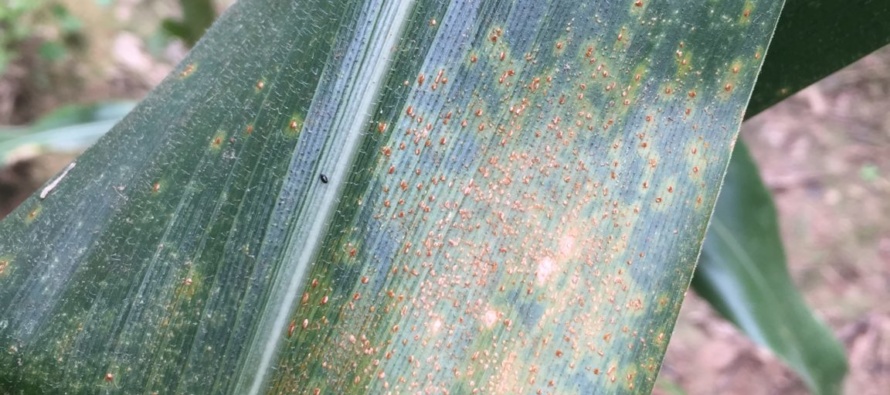Keys to Field Identification of Common Versus Southern Rust in Field Corn

Related Articles
- 2010 Soybean And Corn Variety Trial Data 3
- Rice Variety Trial Results For 2010, Plus Rice Research Report 0
- Evaluation of Peanut Prescription Rx Program in Mississippi 0
Latest Tweets
Common rust has appeared to be a little more severe and certainly widespread in the MS corn crop this season. Much of that has to do with the cooler temperatures as well as the wet weather experienced. As a field diagnosis, telling common and southern rust apart from one another can be difficult. Early in the season, generally prior to tassel (VT) telling the two rust diseases apart can be complicated. Common rust in the lower part of the canopy can oftentimes look different than the pustules that form on or above the ear leaf. In general, when southern rust is observed the disease can be located on leaves at or above the ear leaf. Southern rust is not normally a lower canopy inhabitant.
As outlined below, this information should serve as a general guide to aid in the diagnoses of the two corn diseases. In questionable situations and when leaf samples can be sent to a diagnostic laboratory the spores can be pulled from leaves for a quick comparison with the aid of a microscope. However, be mindful that cannot be done in the field. As with anything in plant pathology there are exceptions to the rules (for example, basing a diagnoses on the presence of the rust on the upper or lower leaf surface). As with the diagnosing of any plant disease rely on observing multiple features of the suspect disease rather than basing everything on one single characteristic.

Common rust of corn in the mid-to-upper canopy generally produces a larger lesion with the darker colored sporulation without a yellow halo.
Common rust:
-every corn hybrid is susceptible to the disease
-generally low in the canopy (bottom three leaves) early in the season (vegetative corn), but can be observed throughout the entire plant canopy
-pustules may appear larger
-pustules are not generally observed with a halo; however, pustules on the lowest leaves can develop a yellow halo that makes field diagnostics difficult
-can be a slight pattern to the disease based on the time of infection and when leaves were still in the whorl of the plant
-prefers cooler temperatures (but this is relative)
-sporulation that erupts through pustules tends to be brown, dark orange, or russet in color
-pustules can form on BOTH sides of the leaf, but this is not the best of diagnostic features associated with the disease
-in MS, fungicides have not been warranted to manage common rust since warmer temperatures generally shut down the fungus

Southern rust produces pustules that appear smaller than those of common and can be surrounded by a faint yellow halo. The sporulation as a result of southern tends to be light orange in color.
Southern rust:
-every corn hybrid is susceptible to southern rust, but there may be ranges of susceptibility within the commercially available germplasm – NOTHING is resistant
-generally observed higher in the canopy (ear leaf and above) when first observed
-pustules are generally smaller in size, at least compared to common rust
-oftentimes pustules are surrounded with a faint yellow halo
-no pattern associated with the disease
-prefers warmer temperatures than common rust (can be active well into 100F)
-sporulation that erupts through pustules tends to be light orange in color
-pustules generally (but not always) form on the upper leaf surface
-fungicides are effective at reducing potential yield losses; however, timing of application and level of infection are important and likely differ on an annual basis (applications at dent are generally not considered to be economically beneficial)




I’m from southern IL we had southern rust the last three seasons. It usually come in late August early September. But last year we had it developing in mid July. Our April planted corn was ok but our mid may and June corn was deviated. We even sprayed fungicide like normal cause I grow white corn. It protected it some but corn that would made 180 bu. Made around 90 or less. And non fungicided corn was in the 70. The rust hit about the time the corn was just past roast ear stage or milk. I wish I would sprayed some acres again to see if it would have helped with a second treatment!